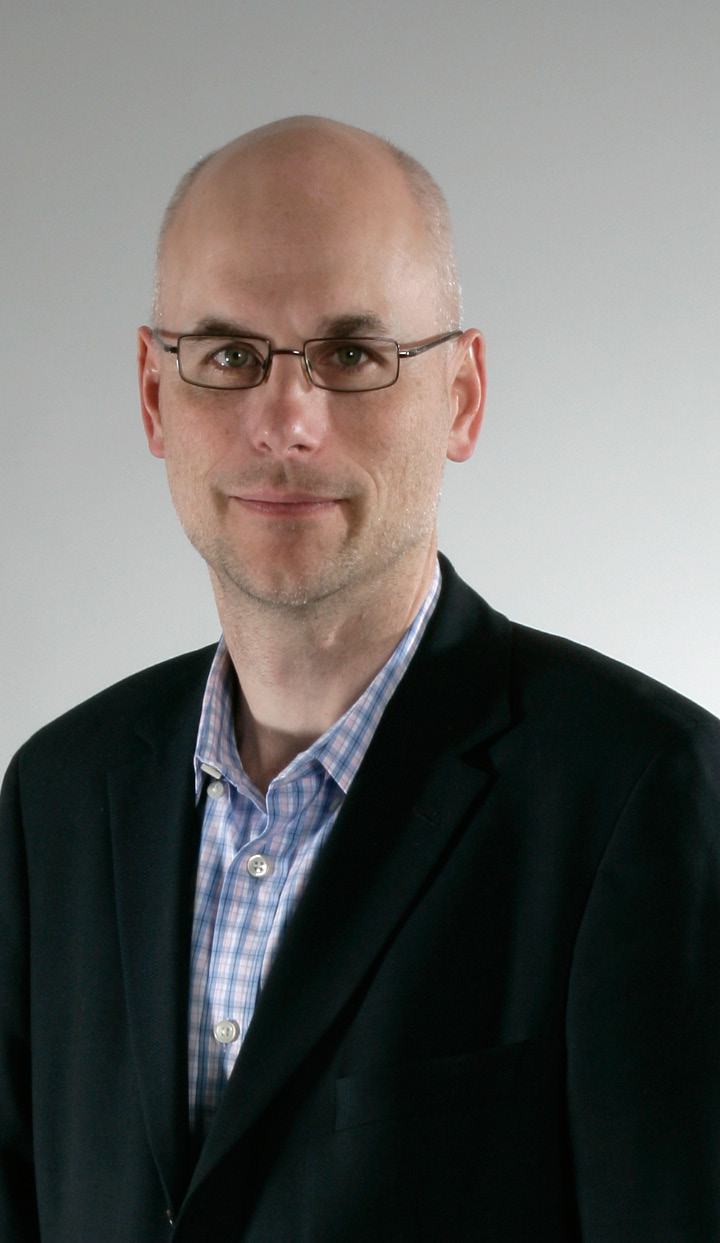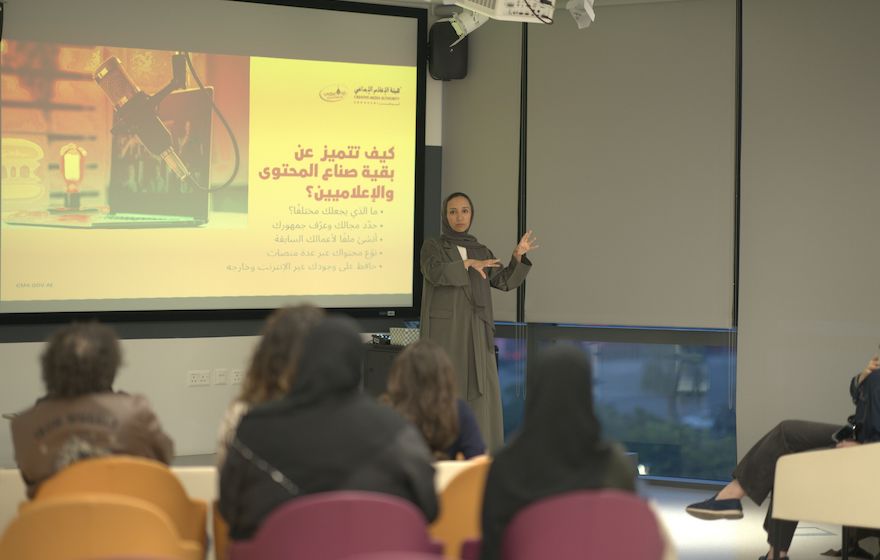Following a recent gathering in Dubai, which brought together Starcom MediaVest Group’s (SMG) senior global and regional management, Olivier Gers, global president at SMG’s branded entertainment content unit LiquidThread, and Matt Blackborn, president of emerging markets at SMG, sat down for a chat with Communicate to share their views on future trends, opportunities and challenges in the region and beyond.
OLIVIER GERS
How different is your new role from your previous one, where you headed Endemol’s commercial solutions for branded content in reality TV?
One of the things I find parallel [between SMG and Endemol] is this ability to take a program that works in one market, but twist it to fit the local specificities of other markets. More importantly, the people are the same; I used to negotiate with folks who are now my colleagues. [The main difference is] SMG is all about innovation; [it] was the first company in the world to strike a deal with Twitter, and we now have a deal with Spotify and other global partnerships with the largest digital platforms in the world.
What are your plans for LiquidThread?
LiquidThread is different on a market-by-market basis, from both a practice and legal framework standpoint; at three years old, it’s a very young business within SMG. During those years, we’ve evolved almost organically without much structure. So, my plan first and foremost is to put in place [that] structure. Our markets are taking our clients on a content journey, all the way from sponsorships and product placement activations, to deeper partnerships, and technology embedded and bespoke content solutions. Part of my job is to make sure that we float all the boats.
How would you describe your business in the Middle East?
It’s one of our best businesses. The challenge is to evolve with the regional marketplace, which is very much TV-centric. What Tarek [Daouk, regional managing director at SMG’s MediaVest MENA] and the teams here are succeeding at doing is creating solutions for clients that are more digitally centered. We’re probably a bit behind in this market, and Tarek would be the first one to admit it. [However] what was really exciting for me was seeing [him] and the team here, exchanging ideas with colleagues in the UK, South America, Australia and China, trying to learn how to avoid mistakes made in other parts of the world. One of the amazing things that we are doing [in the region] is mobile; we’re testing mobile solutions in this market that we’re not testing in other places.
What challenges are you facing in other markets?
We have similar challenges in a lot of different markets, as our clients are still asking for TV-first solutions. We’re facing legal challenges in other businesses; the practice in Germany is different than in France because the legal constraints are different. The challenge is that of speed to market and of coming up with current solutions everywhere at the same time. One of the reasons why we met [in Dubai] is to roll out our agile marketing solutions.
What are the trends you think will shape the future of LiquidThread and SMG?
Trends are going to be extremely technology led; millenials look at the world as a succession of screens, and they are expecting a continuum of experiences from screen to screen. We need to adapt to this new mobility of devices. The second trend is going to be the use of wearable devices as sources of data, which will create an amazing amount of content opportunities. The third major trend is probably going to be around social – not as in social media – whereby folks will be more fragmented on one hand, yet craving this need for a shared and social experience. Content marketing is here to stay and will evolve into solutions marketing, agile marketing, or whatever you call it.
What’s the idea behind SMG’s recently launched Content@Scale, a platform that basically allows brands to sponsor and reuse evergreen content?
Content@Scale is one of the tactical approaches we are experimenting with now and will be rolling out across different markets by the end of the second quarter of 2014. What is really interesting is how Content@scale allows a different value proposition and different kinds of relationships with publishers, utilizing their content, archives and articles, which have a shelf life above and beyond their own forums and platforms. That content could be extremely valuable, reused and repurposed somewhere else.
What are the partnerships you are seeking to drive the growth of LiquidThread?
We’re trying to plug the gaps; I’ve started discussions with content producers about giving us access to some of their preferred output, allowing our clients to have a leg up on their competitors. [I am also] talking to the multi-channel networks – the YouTubes of the world – to figure out how we can establish new conversations and partnerships with the new stars.
MATT BLACKBORN
How does SMG look at the MENA market, as many multinational groups fail to discriminate between the different blocks that make up the region?
We don’t treat them as one huge market. I think from an operating- and financial-reporting perspective we do, but that’s really to streamline the way we conduct our business. There is some shift in the media landscape that allows you to target across markets as the digital landscape evolves, but the consumer base in each of those markets is very different. One of the things we are doing at a regional level is creating centers of excellence in Dubai and Beirut around digital skill sets that the rest of the region can tap into, as well as other emerging markets.
How was the performance of the MENA region for SMG over the past year?
Tremendous. We describe it as the jewel in the emerging market crown. I was lucky enough to be here as the CEO in 2005, 2006 and 2007, and since I’ve taken on the emerging markets role I’ve just seen year after year of consistent growth for the regional office. All this week there’s been a discussion about what’s made this SMG operation so vibrant as a model and how we can deliver that elsewhere.
Which emerging markets are lagging behind?
I think it’s less about operational excellence being the discriminator, and more about getting everybody at the digital scale and capability at an equal pace. Some Central and Eastern European markets are less digitally mature. Markets such as Ukraine and Hungary got sucked into the European Union downturn over time. There’s not necessarily the macro-economic growth, digital maturity there that is needed to accelerate those markets.
What investments are you currently making in emerging markets?
We’re investing heavily in people capability. We just brought a terrific guy here to lead our data and analytics practice out of Dubai, not just for MENA, but for the emerging markets. In India, we’ve bought Convonix – a 300 people-business, the biggest digital marketing company in India – that spans search engine marketing, social media, and data and analytics, which has just catapulted us forward.
What are the opportunities that are particular to the emerging markets?
We’ve had a very clear goal globally to split the business 50/50 between new capabilities and the traditional media environment. Frankly, not every emerging market is going to have a landline-based infrastructure and there’s no investment in the economy to build that. The primary device through which consumers will access the Internet and interact with brands in those markets will be mobile, which means this region and some of the emerging markets can be the accelerators in our capabilities for mobile. We won’t follow the same path in some of the Western economies, where the adoption has been based on broadband.
What trends do you reckon will shape the future of the emerging markets?
The consumer landscape is shifting dramatically in these markets; there is a growing middle class of wealth that creates a huge amount of buying power, which means clients are focusing on those markets. And that’s why the emerging market growth has been outstripping the Western economies.
What are the challenges you are facing as a group?
Finding the best talent. We’re getting better as an organization in moving talent around, because we don’t want to get into the cycle of poaching from other agencies or from other companies. However, our competitive set of companies has broadened; we’re now competing with the Googles, the Facebooks and the consultancies to try to find the best people. That, for me, means we have to broaden how we get our talent from the region and the emerging markets.
What are your plans for this region next year?
I want this region to be the exporter of capabilities. We’ve got people based here that will be growing other markets. We don’t want to just grow our market share. We want to lead the industry in the region.






